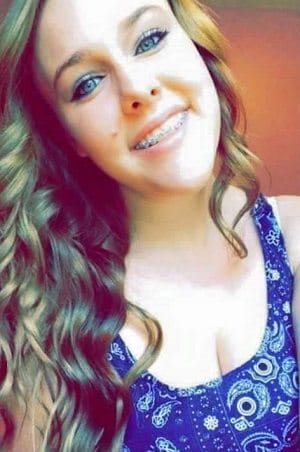Whether you’re a college student or a single in your thirties, when partying involves alcohol and food allergies, it’s wise to have a game plan so that an evening of enjoyment remains just that. An epinephrine dose and ambulance ride are no one’s idea of a good time.
Allergic Living helps you with strategies to stay both social and safe, whether you’ll be at a party or getting together with friends at the local bar or club.
Educate a Friend
 Priya Chopra: friends are great advocates.
Priya Chopra: friends are great advocates. Priya Chopra, a medical school student in Colorado, even found that “once my friends understood my allergies, they took it upon themselves to stand up for me when talking with servers at restaurants.”
Think Ahead
Like all things to do with food allergy, socializing requires thinking ahead.
For a party: Speak to the hosts ahead of time about food being served and what will be safe for you or whether you can bring something if this is unclear.
For a club: If you want to eat out as well as nurse an alcoholic beverage, see if you can be the party organizer and suggest an allergy-friendly venue. If you don’t have confidence in the kitchen practices at a place you’ll be going with friends, then do what Allergic Living editors call “pre-eating”. Make and eat your own meal at home, and take along a small safe snack in a pocket or purse, so you don’t get hungry and succumb to temptation.
When Sloane Miller, a New York psychotherapist who specializes in food allergy management, plans to dine at an untried restaurant, she has a personal protocol: “At a new restaurant, I may not drink. If there is a cross-contact issue with my meal and I’ve had an alcoholic beverage, that could be a bigger medical problem. I will only drink if I know the chef personally, and he or she is handling me.”
Mindful and Moderate
In the U.S., manufacturers aren’t required to provide ingredient labels on alcoholic beverages, except for sulfite content. So if you drink, the best advice is to do a Google search for an alcohol manufacturer to review distilling processes or call the company to discuss specific allergy concerns.
Once you’ve researched, stick with specific brands or drinks that aren’t suspected of containing your allergens.
Imbibing to excess can be especially dangerous with food allergies, since you and your friends won’t have your wits about you if you take a wrong bite or swig. Priyanka Chugh, a medical student in New Jersey, who has celiac disease in addition to peanut and nut allergies, has chosen not to drink alcohol at all. She suggests, “Make your choice for your health and your safety, and people will respect that over time.”
Several other young adults interviewed also mentioned not wanting to be in an altered state for fear of response times if anaphylaxis did occur.
Interestingly, there is a trend in young adults toward more moderate alcohol use, even among those without allergies. Forbes magazine, for example, cited a survey conducted by Heineken to suggest “the days of beer-ponging, shot-gunning and keg- standing” are gone with millennials.
“Three out of four millennial drinkers say they limit how much they drink most of the time they go out, and 38 percent say they moderate their alcohol intake every single time,” the business magazine reported in 2016. And when they do drink, industry-watchers say younger drinkers are gravitating to higher quality beverages. These cost more, which also encourages moderation.
Social Pressure and Bartenders
Managing her nut, peanut and sesame allergies in social situations has proved tricky at times for Carol Brailey, a Toronto image consultant. Once when a friend handed her a drink, “because pressure of where I was, I didn’t want to make a scene or hurt feelings.” She accepted the drink, but immediately Googled on her smartphone – to check the brand’s ingredients.
Bartenders may not receive food allergy training, since many don’t handle food, and may not realize the steps needed to avoid allergen cross-contact. When there are open containers of nuts or other obvious allergens in an establishment, Sloane Miller has another protocol: ask the bartender to wash his or her hands before making your drink.
Mixed Drinks and Liqueurs
Blender drinks can add exposure risks. For instance, when New Jersey resident Denise Uniacke, who has dairy allergy and gluten intolerance, inquired about a drink’s contents at a party, she was told “rum”.
When she began breaking out in hives, she asked again and found out that RumChata, a liqueur that contains dairy, was used in the previous drink that was made. “I was exposed with someone mixing drinks in the blender.”
Even in a bar, a blender pitcher or shaker may not be washed in a dishwasher, leaving allergen residue.
 Denise Uniacke, with her sons: she experienced dairy exposure when served a mixed drink.
Denise Uniacke, with her sons: she experienced dairy exposure when served a mixed drink. Mixed drinks that include salt or sugar on the lip of the glass can also contain allergens. Allergic Living heard several stories of drink glasses being dipped in unknown substances and even crushed biscotti, a hazard for the nut-allergic.
While vodka is often derived from wheat (as well as potato or corn) and gin or whiskey can be produced from gluten-containing barley, most experts consider these alcohols gluten-free. In her book Gluten Free: The Definitive Resource Guide, dietitian Shelley Case explains this is due to distilling.
While gluten is in the fermenting mash, “the alcohol itself evaporates into special equipment where it cools and forms a pure distilled liquid.” Case says heavier gluten-containing material won’t evaporate and remains in the vats.
However, there are occasional, anecdotal reports of celiac symptoms after consuming alcohol. If you want to play it extremely safe, stick to the brands of vodkas and gins made from non-gluten ingredients.
Any allergenic proteins in fermentation residues also should not distill over to the final product. But while distilled alcohol is generally allergy-friendly, some brands will use additives like flavors. These can be derived from Top 9 food allergens. So check before drinking.
Brewing Concerns
Beer is usually made from malted barley and is not distilled, so most beer will contain gluten. However, a whole market of gluten-free beers – made from GF grains like millet, sorghum and rice – has emerged, produced by big beer makers and craft breweries.
Author Case cautions celiac consumers, however, to avoid beers that are marketed as “gluten-reduced” or “gluten-removed”. Such brands are made from barley, with enzyme processes to remove the gluten.
But these processes have not been independently verified, and several celiac experts warn that gluten could remain. Craft breweries are popping up everywhere. But consumers with food allergies need to stay alert about ingredients.
Among the offerings we discovered are peanut butter and nut-flavored beers. Other Top 9 allergens, such as dairy and soy, can be added in the processing of craft beer.
Wine: Fine with Fining?
Food proteins such as egg white, fish and casein (from milk) are often used “to fine” wines, to remove sediment and adjust the taste. Fining materials are then removed by filtration.
A 2011 European study showed protein traces were too low for testing detection, though a few, mild reactions were reported among patients with allergies. The study authors concluded the risk of reacting to such fining agents was very low.
From his research, Stephen Taylor, co-director of the Food Allergy Research and Resource Program at the University of Nebraska, goes further: “I believe that the risk to allergic consumers is essentially non-existent, even when large amounts of wine are ingested.” His view is that “the hazard associated with the alcohol consumption outweighs the allergen risk.”
From an ingredient perspective, most wine is gluten-free. U.S. regulators will allow a gluten-free claim on a wine label if no gluten additives where used and the wine was aged in a container other than an oak barrel – since there is wheat paste in the barrels’ sealant.
However, even oak-aged wines are shown to be low risk; in small tests, their gluten content was well below the 20 parts per million standard for gluten-free.
Cross-Contact in the Bar or Pub
Be aware that many pubs and certain restaurants put out peanuts or nuts for their patrons. Some even use peanuts that people shell. So if you and your friends go out for the night, there can be unexpected exposures.
 Courtney Born: be wary of allergen residue at bars that may lead to cross contact.
Courtney Born: be wary of allergen residue at bars that may lead to cross contact. “I started to feel symptoms of an allergic reaction,” says Born, who has a severe tree nut allergy. She ended up using her auto-injector, and later emailed the brewery.
“They assured me none of their beers contain nuts and they are a nut-free facility. They even picked up their keg from the bar to test for nuts, and the test was negative.” Born recalls nuts were offered in the venue, and thinks she must have had accidental ingestion through contact. “I believe the reaction was from touching surfaces with nut residue on them.”
Bringing wipes is a good solution if you’ll be in a place with allergens like nuts (which are so popular at bars). Or again, be the social organizer and choose the location.
Co-Factor Reactions
Be mindful that up to 30 percent of food anaphylaxis cases involve co-factors, ranging from exercise to aspirin and yes, alcohol. A co-factor trigger can turn what might have been a mild reaction to a food into one that’s severe. If you suspect alcohol might be a co-factor in reactions you’ve had, speak to your allergist.
“One theory is that these co-factors increase absorption of proteins from the gut into the bloodstream, which may lead to an allergic reaction that would otherwise not have occurred,” explains New York allergist Dr. Scott Sicherer of the Icahn School of Medicine at Mount Sinai.
Takeaway Message
The bottom line is this: treat wine, beer and alcohol similar to food that you would consume. If you’re going to drink alcohol, rather than being adventuresome, stay with brands and drinks you know to be safe, be mindful of additives and where cross-contact might occur.
Sidebar: Labeling Food Allergens in Beer and Alcohol
In the United States, the Food Allergen Labeling and Consumer Protection Act (FALCPA) does not cover alcohol ingredient labels. The Alcohol and Tobacco Tax and Trade Bureau (TTB) is responsible for alcohol labeling. They created interim regulations in 2006 about the “voluntary” labeling of alcohol for Top 8 allergens. However, if a manufacturer chooses to put an ingredient label on alcohol, then it must ensure accuracy as to which top allergens are contained in the product.
When it comes to gluten in beer, be aware of the difference between gluten-free and “gluten-removed”. The latter beers are not considered safe for those with celiac disease. The TTB has allowed “gluten-removed” brewmakers to state on the label: “processed to remove gluten.” But they must add this disclaimer: “Product fermented from grains containing gluten and processed to remove gluten. The gluten content of this product cannot be verified, and this product may contain gluten.”
In Canada, allergen labeling regulations apply to wines and alcohols. But an exception was made for standardized beer, which does not have to label allergens or gluten. Makers of wine and liquors must declare added allergens and gluten either in an ingredients list or “contains” statement. Although beer doesn’t require labels for gluten sources or other allergens, if a brewer voluntarily adds an ingredient list, then a complete list, including allergens, must be shown.
Canadian rules distinguish between “gluten-free” beer and “gluten-removed” beer. The latter must carry a disclaimer that the gluten content “cannot be verified.”
To Drink or Not To
Because of the shortcomings in labeling, there are differing approaches to alcohol. Writer Nicole Smith is an advocate for food allergies and the founder of Allergicchild.com. “I’ve long counseled anyone with food allergies not to drink alcohol.”
Her view is that it can be risky because it is hard to determine ingredients and to ensure safe drink preparation. “Virtually every person I interviewed for this article wouldn’t consider eating a food that doesn’t have ingredients labeled, yet when it comes to alcohol, some believe that they can drink safely.”
The editors at Allergic Living acknowledge the risks Nicole raises, but from allergists’ advice, studies and reader input, we do find that it’s possible to drink safely in moderation. The caveats we’d include: be familiar with the alcohol brand, carry epinephrine in case of a reaction, ensure someone with you is trained to use an auto-injector, and don’t drink to excess.
Read More:
Does Alcohol Make Food Reactions Worse?
Single With Food Allergies: Advice on Dating and Relationships
You Can Be a ‘Foodie’ With Allergies, But Also a Food Detective






